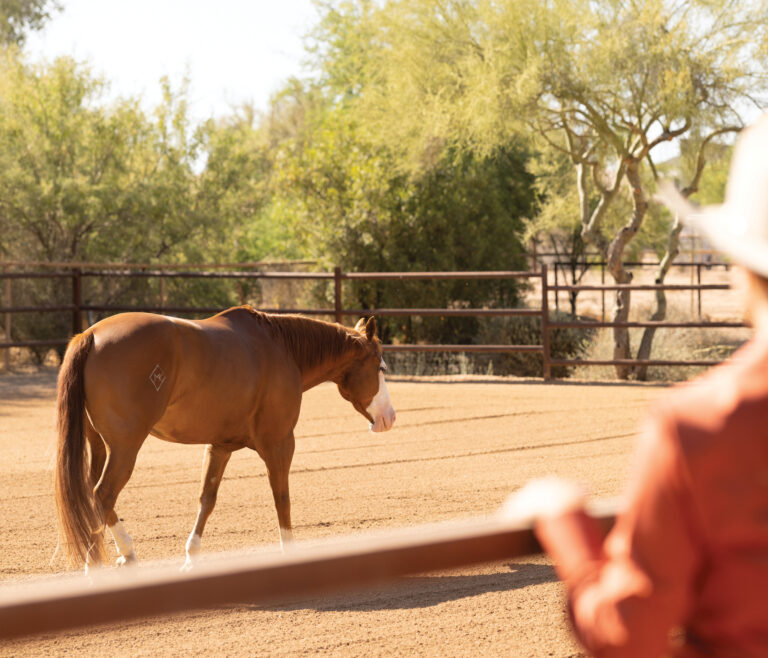
What Is It?
Most commonly, a type of swelling, called “stocking up,” occurs when fluid pools in the tissues of your horse’s lower legs (called edema) during periods of inactivity. When your horse is exercised, the fluid is mobilized into his circulation and his legs return to normal.
To determine if the swelling in your horse’s legs is “stocking up,” apply pressure with your fingers over a swollen area. The pressure will cause pits in your horse’s skin (hence the term “pitting edema”)—similar to what you’d see if you press your fingers into bread dough that’s risen. It shouldn’t cause him pain when you apply pressure, and the pits you created will slowly fill in as the fluid returns over a period of 30 to 60 seconds.
Should I Be Concerned?
Many horses, especially as they age, will experience stocking up with no apparent underlying cause. In most cases, edema can be easily managed and should not be cause for concern. Daily turnout and regular exercise are imperative for a horse who stocks up, so it sounds like you’re on the right track in managing your gelding’s problem correctly.
You might also consider supporting him with stable bandages when he’s not working to minimize the swelling. Some horses who consistently stock up fare better when kept wrapped. Be aware, however, that if you decide to bandage him, it’s critical you know how to do it properly. The wraps must be kept clean and dry, and they need to be changed daily. You also need to pay close attention to your horse’s skin underneath the wraps to be sure he doesn’t develop scabbing, crusting, or hair loss due to moisture accumulation underneath the bandages.
In rare cases, an underlying medical problem can contribute to stocking up. If this is your horse’s case, you might notice fluid accumulation underneath his belly or in his sheath. Specifically, heart disease can lead to edema. Because the heart becomes inefficient at pumping blood, causing fluid to pool as a result.
If your horse is experiencing any degree of heart failure, you’ll likely notice additional signs, such as exercise intolerance, that might be cause for concern.
Other Causes
Liver disease can also cause edema. When the liver suddenly decreases its protein production, fluid often leaks into surrounding tissues. Symptoms of liver problems include weight loss, diarrhea, or other signs of unthriftiness, such as a rough hair coat.
A viral disease or an allergic reaction can also cause leg swelling. But, such swelling would be more likely to occur suddenly, rather than persistently as you describe.
If you’re concerned something more serious than stocking up is affecting your gelding’s health, schedule an appointment with your veterinarian for an exam. He or she can listen to your horse’s heart. They may suggest a set of basic laboratory tests to evaluate his liver function and overall health.
If everything checks out normally, your horse is probably just experiencing edema. Turnout and regular exercise should keep the swelling to a minimum.




